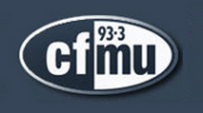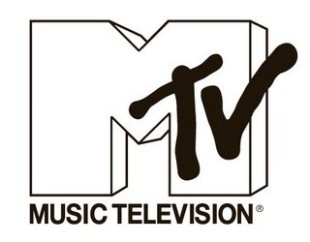Tags
The ladies of Let’s Rock, Let’s Rock Today hope you all have been enjoying our discussions. Today, we bring you some more information about alternative rock, as we analyze the way radio (specifically college radio) and television (specifically MTV) has affected our genre culturally and historically. First let’s talk a little about college radio.
College radio is a type of radio station run by students of a university or college such as CFMU at McMaster. These stations became huge in the underground scene in the mid 1980s for embracing UK punk and other music that commercial rock stations rejected (Rublin). College stations exposed artists who got minimal commercial airplay, supported marginalized musical styles, favoured independent record labels over major labels and occasionally resulted in mainstream success for a few bands (Rublin). The term college rock became a genre in itself to describe music that was played on college radio before alternative rock began being used by the 1990s (AllMusic). Throughout the 1980s and 1990s, college radio became a way for new artists to be discovered, DJs of these stations rejected the mainstream and were supporters of these authentic sounding bands. Statistics show that around 70% of all college radio stations program some type of “alternative rock” (Samuel, 73). This is huge for radio, where people are used to hearing Top 40 music on every station, now they are hearing music they didn’t even know existed. This is where new talent is born and discovered, this is where bands who didn’t get a chance in the mainstream world get noticed.
One of the biggest alternative rock bands to have their start on college radio and move on to the mainstream world is U2. U2 emerged, “..at the onset of post-punk and genuinely and immediately set itself apart from both punk and new wave. The band’s politically charged, anthemic rock was too self-conscious for pop radio, so college DJs gladly took up the cause of great music that might otherwise gone unheard” (80smusic)
<iframe width=”420″ height=”315″ src=”//www.youtube.com/embed/LHcP4MWABGY” frameborder=”0″ allowfullscreen></iframe>
U2 wasn’t the only band to start on college radio and move on to get mainstream recognition. The Church’s single Under the Milk Way and R.E.M’s single The One I Love both reached Top 40 on the Billboard Charts and moved on to have majorly successful careers (AllMusic). In 1983, R.E.M also cracked the Top 40 with their single Murmur which caused a minor stir with the public since it didn’t have much mainstream radio play (Rublin). “Today, college radio is all-important. It’s the breeding ground for the new talent [and] it’s also the lifeblood of the independent record industry” (Samuel, 74). The music industry started to begin listening to college radio as a way of early warning systems: Who was going to be huge? What band will we have to watch out for? Who do we need to sign? “College radio stations – greenhouses for cutting edge rock n roll – nurture new bands that often become mainstream hits a few months later” (Samuel, 74). College radio was such a success in the rock community that over half of the entries in Rolling Stone’s list of top 25 albums of the 1980s had their first airplay on college stations (Rublin). Other bands that became mainstream after being featured on college radio: Soundgarden, Stone Temple Pilots, Nine Inch Nails, The Smiths, The Cure, and many others.
<iframe width=”560″ height=”315″ src=”//www.youtube.com/embed/g6jhpaX7fNQ” frameborder=”0″ allowfullscreen></iframe>
Another medium that was very influential in the success of popular music was MTV (Music Television).
The cable television channel MTV first aired in 1981 (Rublin). MTV promoted UK post-punk and new bands which used to only be recognized on college radio (Rublin). Music videos act as advertisements, before on college radio there was no visual, now people had an image to associate the song with, “…television seems to absorb the musical matrix effortlessly and irrevocably into its visual field, to confirm the now commonplace knowledge that music television has reshaped the music industry” (Firth, 75). The entire industry was changed, before, film played a huge role in music with songs being featured on films such as Bill Haley’s Rock Around the Clock in the movie Blackboard Jungle and now with the popularization of music videos, everyone was able to get a visual with their song. The industry began to rise drastically, by 1984, music video is included in Video Culture Canada and in Canada’s music industry awards (Firth, 26). Statistics showed that, “MTV viewers were more influenced [in their purchase of records] by the cable music than by radio, concerts or commercial TV” (Frith, 235). 39.1% of adolescent MTV viewers stated they watched to learn about current [music] trends (Tapper). College radio was still a huge influence to alternative music, but it’s local; while music television is national.
Nirvana was one of the largest alternative rock sensations to grow success through MTV with their video Smells Like Teen Spirit. (MTV, Wiki)
<iframe width=”420″ height=”315″ src=”//www.youtube.com/embed/hTWKbfoikeg” frameborder=”0″ allowfullscreen></iframe>
After the success of Smells Like Teen Spirit, MTV began airing videos on “Buzz in” which was a segment where they would feature videos that are up and coming such as videos from Pearl Jam, Soundgarden, and Tori Amos (MTV, Wiki). Alternative music also began featured on MTV’s weekly program 120 Minutes and daily Alternative Nation which played underground music acts (MTV, Wiki). MTV cartoon Beavis and Butthead also featured alternative bands such as White Zombie (MTV, Wiki).
One of the most influential programs on MTV to help the alternative rock’s genre is the segment Unplugged. It began in the networks 1989/1990 TV season and featured musicians who performed acoustic or unplugged versions of their songs (Unplugged, Wiki). Many of these performances went on to be released as albums. Nirvana’s appearance on Unplugged went on to win Best Alternative Music Performance at the 28th Grammy Awards in 1996 a couple years after Cobain’s death. (Unplugged, Wiki)
Check out this video from Nirvana’s Unplugged session, noted in the Kurt Cobain biography Heavier Than Hell and Sum[mer] 41’s favourite performance of Kurt Cobain ever (she may have cried the first time she watched this but don’t tell anyone):
<iframe width=”560″ height=”315″ src=”//www.youtube.com/embed/tNd5cZ9lbM0” frameborder=”0″ allowfullscreen></iframe>
If it wasn’t for the anti-mainstream DJ’s of college radio and the music videos on MTV that we miss so much, alternative rock may not have hit the mainstream charts or get the appreciation this genre deserves.
Works Cited
“80s Music.” 80s Music. N.p., n.d. Web. 21 Nov. 2013. <http://80music.about.com/od/genresmovements/p/collegerock.htm->.
“All Music.” All Music. N.p., n.d. Web. 21 Nov. 2013. <http://www.allmusic.com/style/college-rock-ma0000012237>.
Rubin, Nick. “US College Radio, The ‘New British Invasion’ And Media Alterity.” Radio Journal: International Studies In Broadcast & Audio Media 9.2 (2011): 127-143. Communication & Mass Media Complete. Web. 21 Nov. 2013.
Samuel J. Sauls Studies in Popular Culture , Vol. 21, No. 1 (OCTOBER 1998), pp. 73-81
Tapper, John, and Esther Thorson. “Variations In Music Videos As A Function Of Their Musical Genre.”Journal Of Broadcasting & Electronic Media 38.1 (1994): 103. Communication & Mass Media Complete. Web. 21 Nov. 2013.


